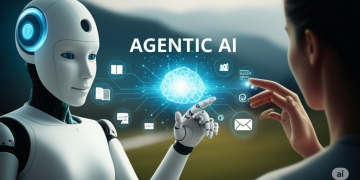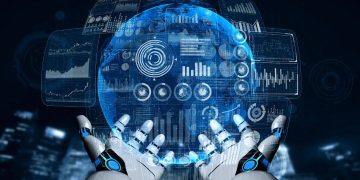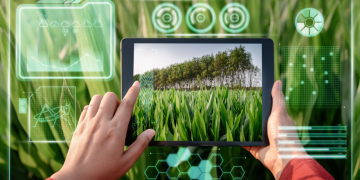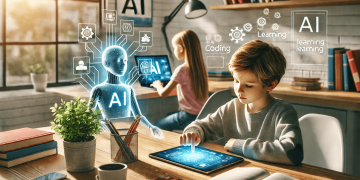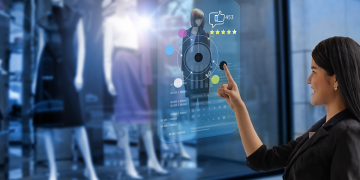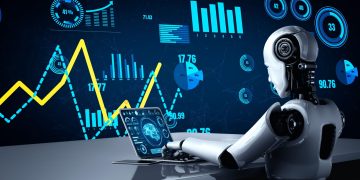Generative Adversarial Networks (GANs) have revolutionized the way we think about creativity in the digital age. Since their inception in 2014 by Ian Goodfellow, GANs have evolved from an intriguing theoretical concept into powerful tools that are shaping various creative industries, including art, music, and content creation. By leveraging the power of machine learning, GANs have enabled machines to generate original content that closely mimics human creativity. This article explores the latest developments in GANs and their applications across creative industries, examining how they are transforming artistic expression, musical composition, and digital content creation.
1. Understanding Generative Adversarial Networks (GANs)
Before diving into their applications in creative industries, it’s essential to understand how GANs work. A GAN consists of two neural networks: the generator and the discriminator. These networks work together in a competitive manner, which is why the term “adversarial” is used.
- Generator: The generator network creates fake data that is meant to resemble real data. For example, it may generate images, music, or text based on learned patterns from a dataset.
- Discriminator: The discriminator’s role is to differentiate between real and fake data. It evaluates whether the data generated by the generator is close to the real data or not.
The generator and discriminator engage in a back-and-forth process, with the generator trying to fool the discriminator into thinking its creations are real, while the discriminator tries to become better at distinguishing real from fake. This adversarial training process results in increasingly sophisticated and realistic outputs over time.
2. GANs in Visual Arts: Redefining Artistic Creation
The application of GANs in visual arts has been one of the most prominent areas of development. Artists and technologists have used GANs to create images, paintings, and digital art that challenge traditional boundaries of creativity and authorship.
a) GANs in Image Generation
One of the primary uses of GANs in the art world is image generation. GANs have been trained to generate highly realistic images, ranging from abstract art to photorealistic portraits. By feeding a GAN with a dataset of artworks or photographs, the generator learns to produce novel images that resemble the input data but are entirely original.
In 2018, the sale of a GAN-generated portrait, “Edmond de Belamy,” for $432,500 at Christie’s auction house marked a significant moment in the intersection of AI and art. The portrait, created by the Paris-based art collective Obvious, exemplified the potential of GANs to produce art that can be sold as valuable works. This event raised important questions about the nature of authorship and creativity in the age of AI.
b) Style Transfer and Artistic Expression
GANs are also used in style transfer, a technique that allows artists to apply the style of one image (such as a famous painting) to another. For example, GANs can take a photograph and transform it to resemble the artistic style of Van Gogh, Picasso, or other renowned artists. This process has allowed both amateur and professional artists to experiment with new forms of creative expression.
Furthermore, GANs are being used to develop innovative tools for creating digital art, enabling artists to generate complex and intricate designs that would be challenging to produce manually. With GANs, digital artists can explore new aesthetics and push the boundaries of visual creativity.
3. GANs in Music Composition: Composing New Soundscapes
Just as GANs have impacted visual arts, they are also making waves in the world of music composition. AI-driven music generation has gained significant attention in recent years, with GANs playing a central role in creating new soundscapes, genres, and musical compositions.
a) Music Generation and Composition
GANs have been employed to generate original compositions across various genres, including classical, jazz, electronic, and pop. By training GANs on datasets of existing music, the generator can learn patterns in melody, harmony, rhythm, and structure to create entirely new pieces of music. For example, OpenAI’s MuseNet and Google’s Magenta project have demonstrated the potential of GANs in music generation by producing complex compositions that mimic the style of famous composers or artists.
Additionally, GANs can be used for music augmentation, where AI-generated music is blended with human-created music to create hybrid compositions. This collaborative approach can help musicians explore new creative possibilities and expand their musical repertoire.
b) Music Personalization and Customization
GANs are also being applied to create personalized music experiences. By analyzing user preferences and listening habits, AI models can generate tailor-made playlists or even compose music that aligns with an individual’s tastes. This level of personalization has the potential to transform how people engage with music, offering customized soundscapes for different moods, activities, or environments.
c) Music Production and Sound Design
In addition to composition, GANs are being used to assist in music production and sound design. AI tools can generate novel sounds, synthesize new instruments, and suggest unique musical arrangements. These AI-driven tools are becoming valuable assets for music producers, enabling them to create innovative and unconventional soundscapes that would be difficult to achieve using traditional methods.

4. GANs in Content Creation: Revolutionizing Digital Media
The use of GANs is also spreading to the broader content creation landscape, including video production, virtual reality (VR), and even writing. GANs are being used to generate digital content that is indistinguishable from human-created media, opening up new possibilities for creators and content producers.
a) AI-Generated Videos and Visual Effects
GANs are being used to generate synthetic video content, including deepfake technology, which allows for the creation of hyper-realistic videos of people saying or doing things they never actually did. While deepfake technology has raised ethical concerns, it has also demonstrated the potential of GANs in the entertainment industry. Movie studios are exploring the use of GANs to generate realistic special effects, animate characters, and even create entire scenes without the need for expensive set designs or actors.
Furthermore, GANs can be used to create personalized videos, where content is dynamically generated based on viewer preferences or behavior. For example, AI-powered video editors can automatically generate video highlights for sports events, creating tailored content for viewers in real-time.
b) AI in Game Development and Virtual Worlds
GANs are also making a significant impact in the gaming and virtual reality industries. Game developers can use GANs to generate realistic game environments, characters, and textures, reducing the time and resources required to design intricate virtual worlds. Additionally, AI-driven content generation tools can help create dynamic and procedurally generated game worlds, where the environment changes based on player actions or decisions.
Virtual reality experiences are also benefiting from GAN-generated content. GANs can be used to create virtual environments, avatars, and interactive elements that feel realistic and immersive. This opens up new possibilities for VR entertainment, education, and simulations.
c) AI-Generated Text and Storytelling
GANs are being explored for text generation and storytelling applications as well. AI models powered by GANs can generate written content, such as articles, poems, and short stories, by learning from large datasets of existing text. These models can produce narratives that mimic the writing style of famous authors or create entirely new literary styles.
Furthermore, GANs are being used to assist writers in the creative process by providing suggestions, plot ideas, and character development tools. By combining the creativity of human writers with the capabilities of AI, storytelling is becoming an evolving and collaborative process.
5. Ethical Considerations and Challenges of GANs in Creative Industries
While the potential of GANs in creative industries is exciting, there are several ethical concerns and challenges that need to be addressed. These include:
- Authorship and Ownership: As AI-generated art, music, and content become more prevalent, questions arise about who owns the intellectual property of AI-created works. Should the credit go to the creator of the GAN algorithm, the person who trained the model, or the AI itself?
- Deepfakes and Misinformation: The rise of deepfake technology powered by GANs has led to concerns about the spread of misinformation and the manipulation of public opinion. AI-generated content can be used to create realistic but false videos or images, raising ethical questions about the potential harm it could cause.
- Bias and Fairness: GANs are trained on large datasets, and if those datasets are biased, the generated content can perpetuate stereotypes or reinforce harmful biases. Ensuring fairness and diversity in the training data is essential to mitigating these risks.
- Impact on Human Creativity: As AI becomes more involved in creative processes, there is concern that it may undermine human creativity. However, many argue that AI is more of a tool to enhance and augment human creativity rather than replace it.
6. The Future of GANs in Creative Industries
As GAN technology continues to evolve, it is likely that we will see even more advanced and innovative applications in creative industries. Future developments could include:
- Collaboration between AI and Humans: The future of GANs in creative industries will likely involve more collaboration between AI and human creators. AI could become an indispensable tool for artists, musicians, and content creators, providing them with new ways to express themselves and generate novel ideas.
- Real-Time Content Creation: We may see the rise of AI-powered tools that allow for real-time content creation, where AI adapts to user input and generates content instantly based on creative direction or feedback.
- Advanced Personalization: AI-driven content could become more personalized, with GANs generating content tailored to individual preferences in real-time, providing consumers with unique and customized experiences.
Conclusion
The evolution of Generative Adversarial Networks (GANs) has profoundly impacted creative industries, enabling new forms of artistic expression, music composition, and content creation. While GANs present exciting opportunities, they also raise important ethical questions that need to be addressed. As the technology continues to improve, it is clear that GANs will continue to play a significant role in shaping the future of creativity, offering new tools and possibilities for artists, musicians, content creators, and industries alike.







